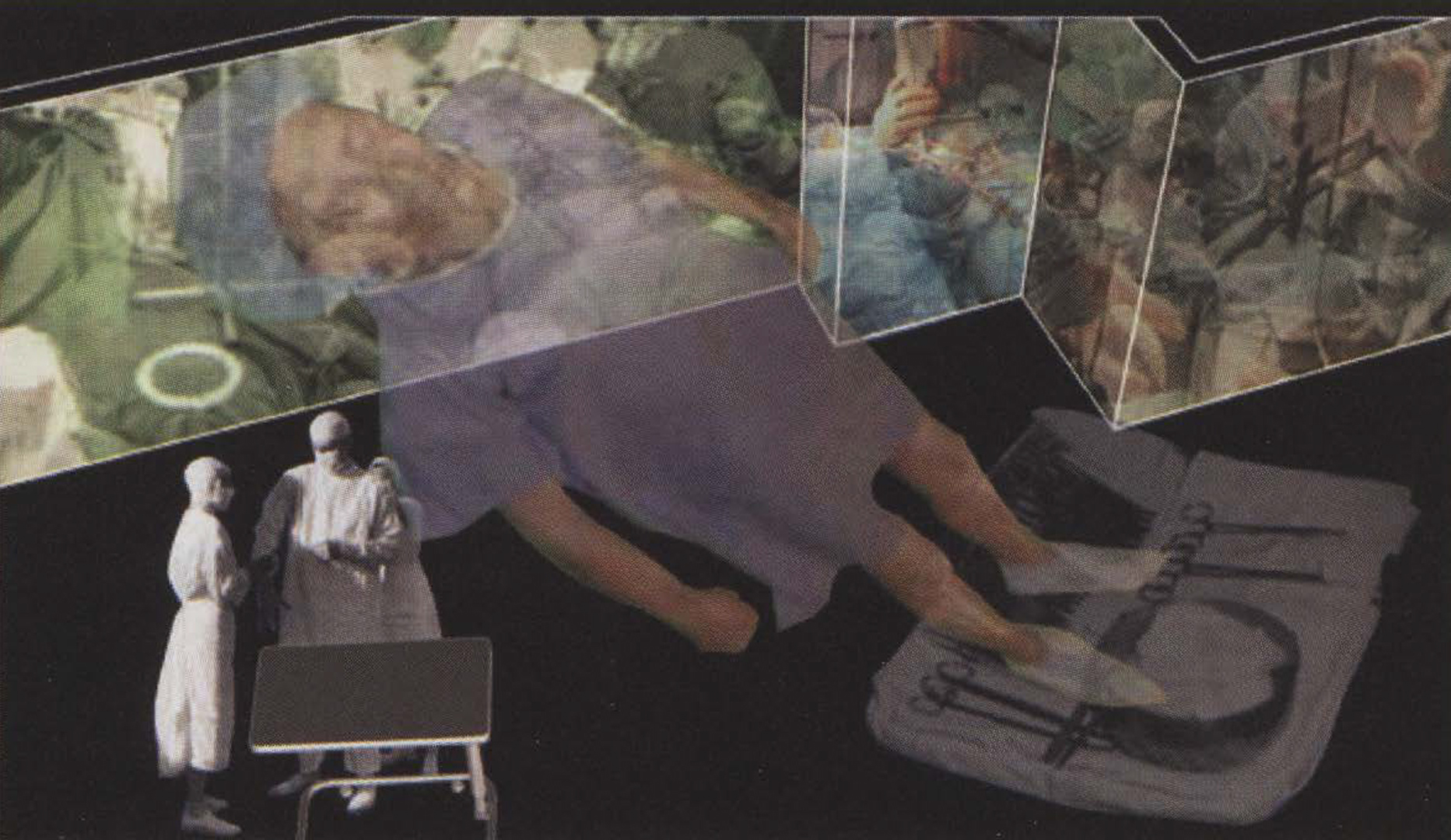Annette Weintraub: Life Support
Artist(s):
Title:
- Life Support
Exhibition:
Creation Year:
- 2004
Category:
Artist Statement:
Annette Weintraub is a media artist whose projects embed layered narratives within a variety of architectural constructs. Her work is an investigation of architecture as visual language and focuses on the dynamics of urban space, the intrusion of media into public space, and the symbolism of space. She creates large-scale web projects that integrate elements of narrative, film, and architecture within a conceptual representation of space, often using sound to spatialize that structure. Her projects incorporate photo-based imagery, texts, and moving images in a densely layered space that encourages simultaneous reading, hearing, and seeing. She uses narrative features such as multiple story lines that intersect at random intervals to create larger narratives, and she intermixes factual and fictive elements, and a range of storytelling modes. As part of an investiga tion of how our sense of place shapes behavior and is memorialized in recollection, she is now working with hybridized constructs of 20 and 30 to explore modes of spatial representation and the subjective experience of physical space.
Technical Information:
Life Support (www.annetteweintraub.com/lifesuppo /index.html). Hall for dreamers or impersonal machine? Hospital architecture is an amalgam of elements derived from religion, the military, and the factory. Life Suppo explores this symbolic coding of space and its underlying mythologies. Four spatial hybrids mixing 20 and 30 representation act as narrative containers for issues of hierarchy, mechanization, privacy, and identity.
Life Support explores the subjective experience of space. It looks at the way in which medical environments affect behavior, perception, and perhaps healing. The symbolism of space is deeply ingrained, perhaps physiological. Subtle aspects of environment influence behavior, mood, and perception. We read the underlying messages of rooms dedicated to waiting, to sleep, to punishment, or to death through their design, ambience, and contents.
“Hospital” comes from the Latin “hospes,” meaning guest or host, the same root as hospitality and hotel. A contemporary hospital might contain vestiges of the cruciform design of the Renaissance hospital, the panopticon of the prison, and the compartmentalization of the industrial factory. Life Suppo draws upon depictions of med ical spaces in advertising, popular culture, and film, and their reinte gration into this vocabulary of space.
Life Support creates a series of “rooms” based on archetypal hospital spaces: a corridor, waiting room, patient room, and treatment room. Each of these locations is associated thematically with a particular psychological state or adaptation response and explored in moving images paired with short fictions and architectural commentary.
These spaces are hybrids of 20 and 30 elements in which the 30 spatial construct (a wireframe of a room) functions as a scrim for projection of multiple images and as a container for layering of audio elements. Movement through space and narrative movement are linked, as in a walking meditation.
Life Support is a Flash-based project incorporating extensive sound, composited animation, still images, and 30 models within a wire frame construct of 30 space. The Flash 6 plug-in is required, and external speakers are recommended for best sound quality





